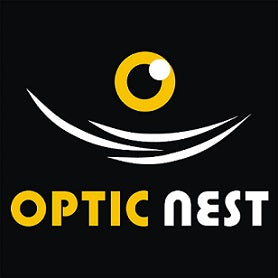Prism Lenses: Enhancing Vision and Correcting Eye Misalignment | Optic Nest | Bengaluru
Prism lenses are a specialized type of corrective eyewear designed to address eye alignment issues and double vision (diplopia). Unlike standard lenses that primarily correct refractive errors like myopia or hyperopia, prism lenses alter the path of light entering the eyes, helping to align the images seen by each eye. This essay explores the features, benefits, and applications of prism lenses, emphasizing their importance in improving visual function and quality of life.
Understanding Prism Lenses
Prism lenses incorporate a prismatic effect into the lens design, which shifts the perceived position of objects. This shift helps to correct the visual disparity caused by misaligned eyes, also known as strabismus. Strabismus occurs when the eyes do not properly align with each other, leading to double vision or difficulties in depth perception. Prism lenses are prescribed by eye care professionals after a thorough examination and diagnosis of eye alignment issues.
Features of Prism Lenses
**1. **Customized Prescription Prism lenses are customized based on the degree and direction of the eye misalignment. The prescription includes the prism power measured in prism diopters (PD) and the base direction, indicating where the thickest edge of the prism is positioned (base in, base out, base up, or base down).
**2. **Single or Multifocal Options Prism lenses can be incorporated into single vision lenses or multifocal lenses (bifocals, trifocals, or progressive lenses), providing a comprehensive solution for individuals with both refractive errors and eye alignment issues.
**3. **Material and Coatings Prism lenses are available in various materials, including plastic, polycarbonate, and high-index lenses. They can also be treated with anti-reflective coatings, UV protection, and scratch-resistant coatings to enhance durability and visual comfort.
Benefits of Prism Lenses
**1. **Correcting Double Vision One of the primary benefits of prism lenses is their ability to correct double vision. By aligning the images seen by each eye, prism lenses help individuals achieve a single, clear vision, reducing the discomfort and confusion associated with diplopia.
**2. **Improving Eye Coordination Prism lenses aid in improving eye coordination and binocular vision. Proper alignment of the eyes enhances depth perception, making it easier to judge distances and navigate the environment safely.
**3. **Reducing Eye Strain and Fatigue Individuals with eye misalignment often experience significant eye strain and fatigue due to the constant effort to achieve clear vision. Prism lenses alleviate this strain by providing the necessary optical correction, allowing the eyes to work together more comfortably.
**4. **Enhancing Quality of Life Correcting eye alignment issues with prism lenses can significantly improve the quality of life. Better vision clarity and reduced eye strain contribute to enhanced performance in daily activities, work, and social interactions.
Applications of Prism Lenses
**1. **Strabismus Prism lenses are commonly prescribed for individuals with strabismus, a condition where the eyes are misaligned. By shifting the perceived position of images, prism lenses help align the vision of each eye, reducing or eliminating double vision.
**2. **Convergence Insufficiency Convergence insufficiency is a condition where the eyes do not work together properly when focusing on close objects. Prism lenses can help by bringing the images into better alignment, making near tasks like reading more comfortable.
**3. **Post-Surgical Correction After certain eye surgeries, patients may experience temporary or permanent changes in eye alignment. Prism lenses can be used to correct these alignment issues, ensuring clear and comfortable vision during the recovery period.
**4. **Neurological Conditions Certain neurological conditions, such as stroke or traumatic brain injury, can affect eye alignment and coordination. Prism lenses are often part of the rehabilitation process, helping to restore proper visual function.
Getting the Right Prism Lenses
**1. **Comprehensive Eye Examination A thorough eye examination by an optometrist or ophthalmologist is essential to determine the need for prism lenses. This includes tests to measure eye alignment, assess binocular vision, and diagnose any underlying conditions.
**2. **Precise Prescription Prism lenses require a precise prescription to ensure they effectively correct the specific alignment issue. The eye care professional will determine the appropriate prism power and base direction based on the individual's needs.
**3. **Regular Follow-Up Regular follow-up appointments are crucial to monitor the effectiveness of the prism lenses and make any necessary adjustments. This ensures optimal visual correction and comfort over time.
Conclusion
Prism lenses play a vital role in correcting eye alignment issues and enhancing visual function. By addressing conditions like strabismus and double vision, prism lenses improve eye coordination, reduce eye strain, and enhance overall quality of life. Customized to meet individual needs, these lenses offer a comprehensive solution for those with both refractive errors and alignment problems. Regular eye examinations and precise prescriptions are essential for maximizing the benefits of prism lenses, ensuring clear, comfortable vision and improved daily performance.
For more information:
Email : sales@opticnest.in
Helpline : 98860 09067
Place : Bangalore
Country : INDIA
Branches :
Kaikondrahalli : 99450 74433
HSR Layout : 99001 45844
Kasavanahalli : 99804 92795
Dommasandra : 90083 02853

